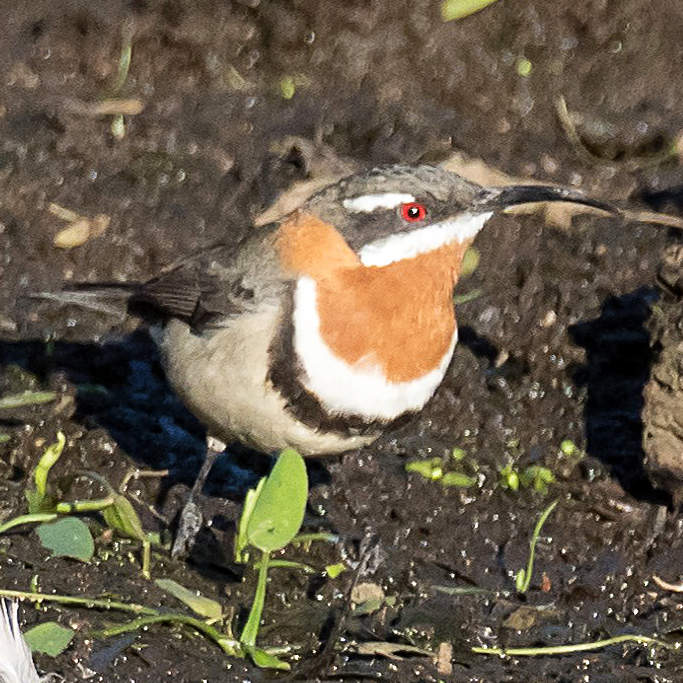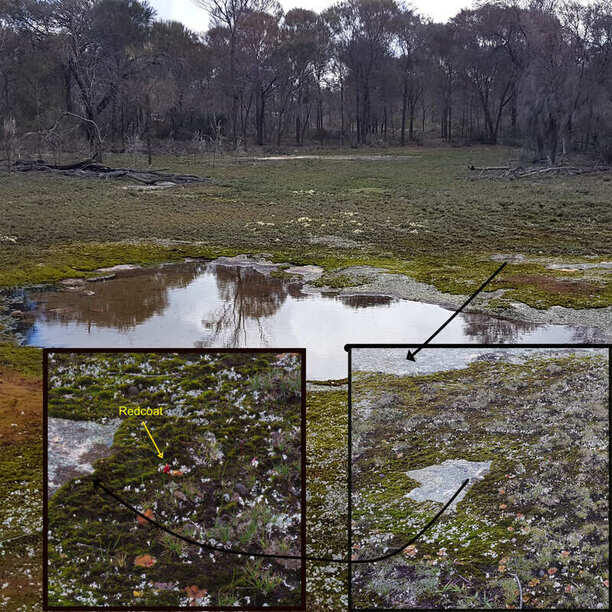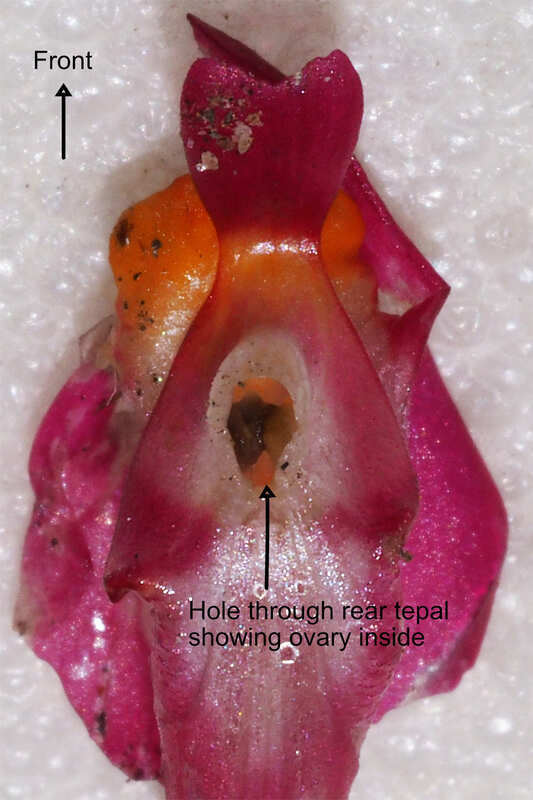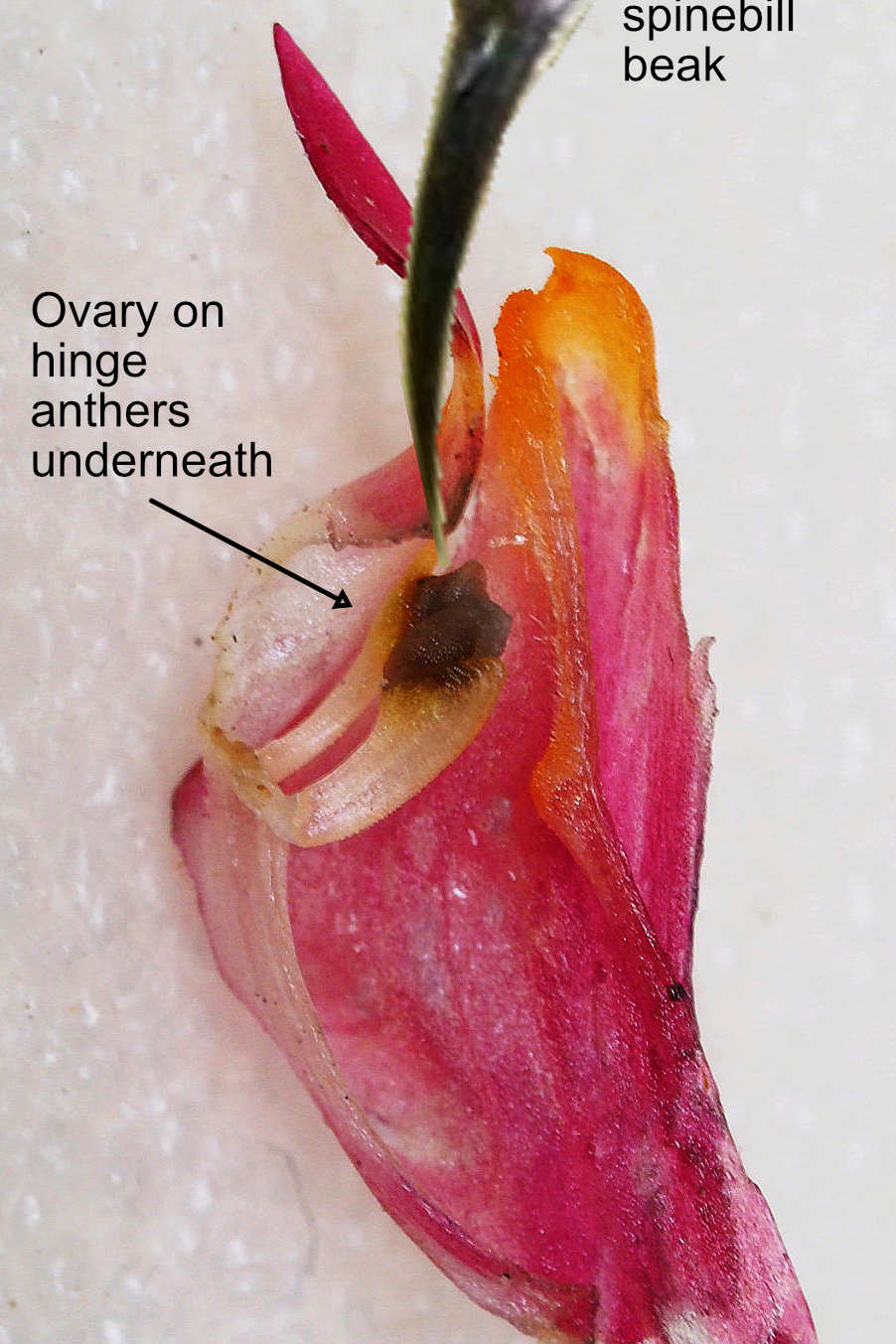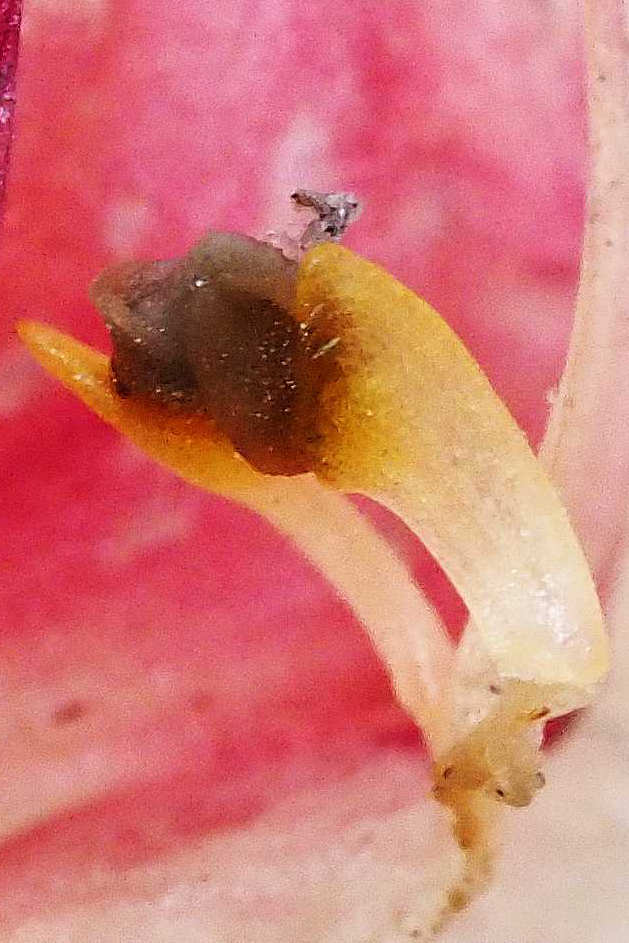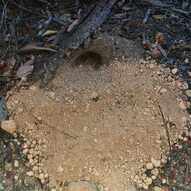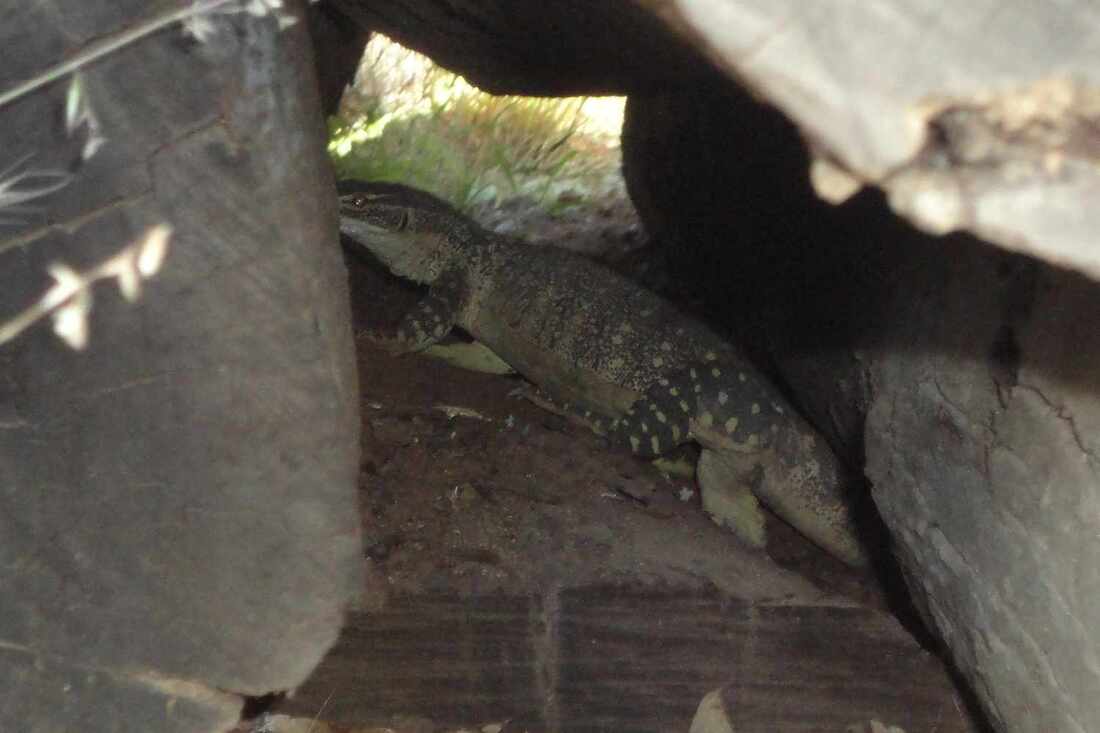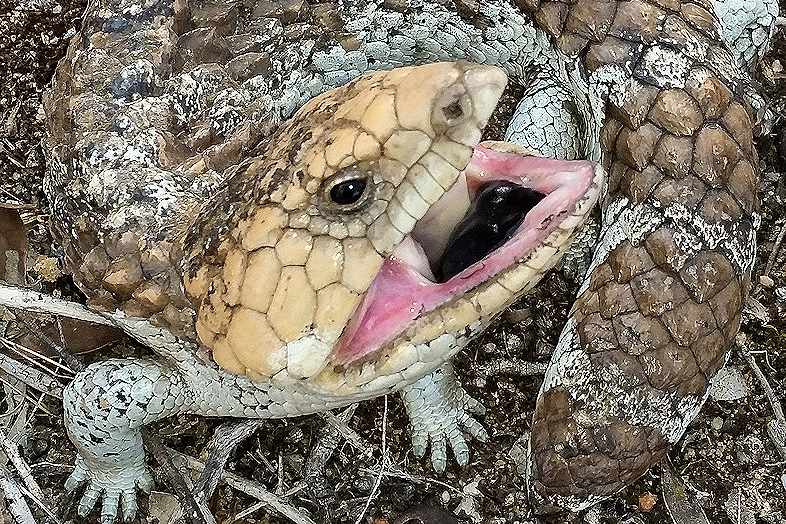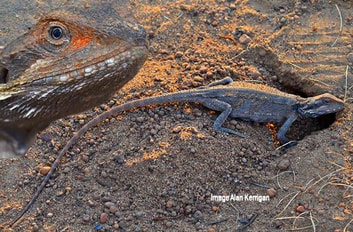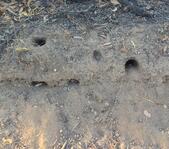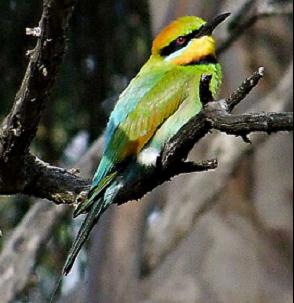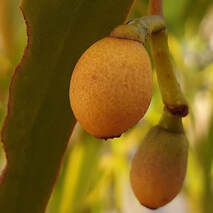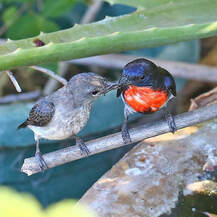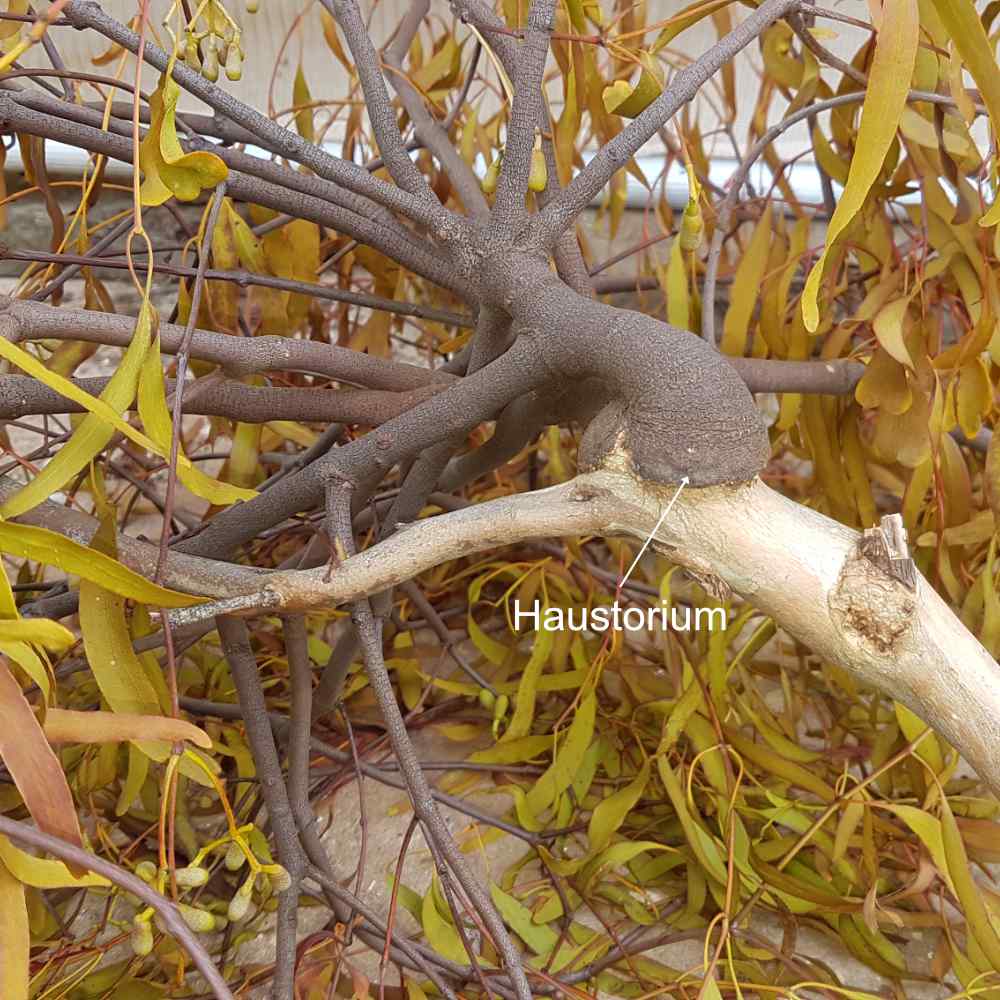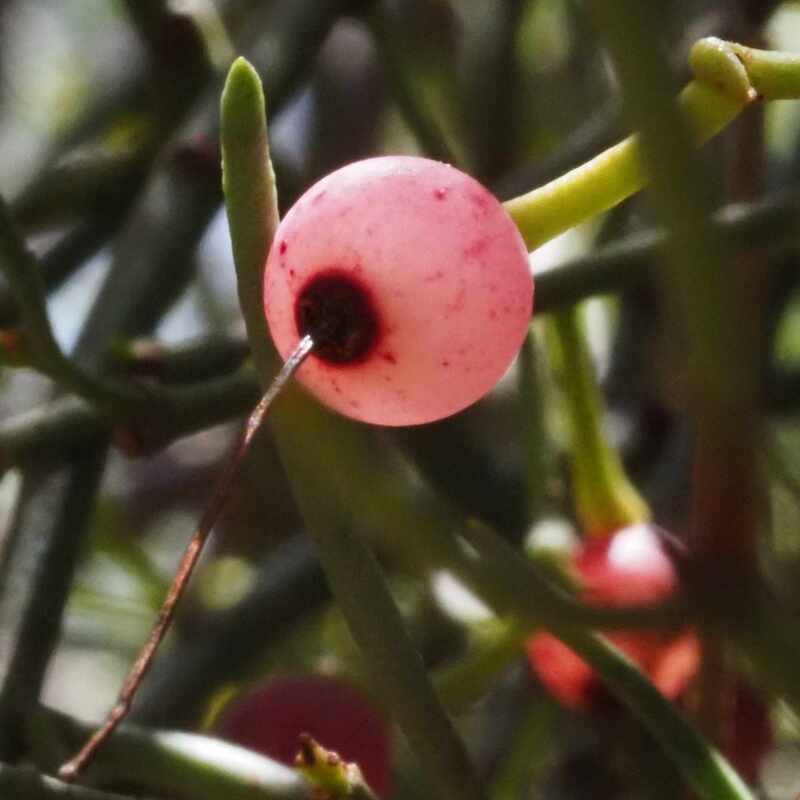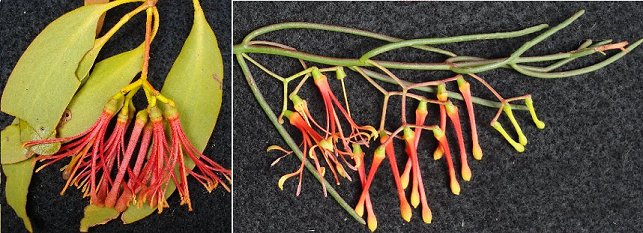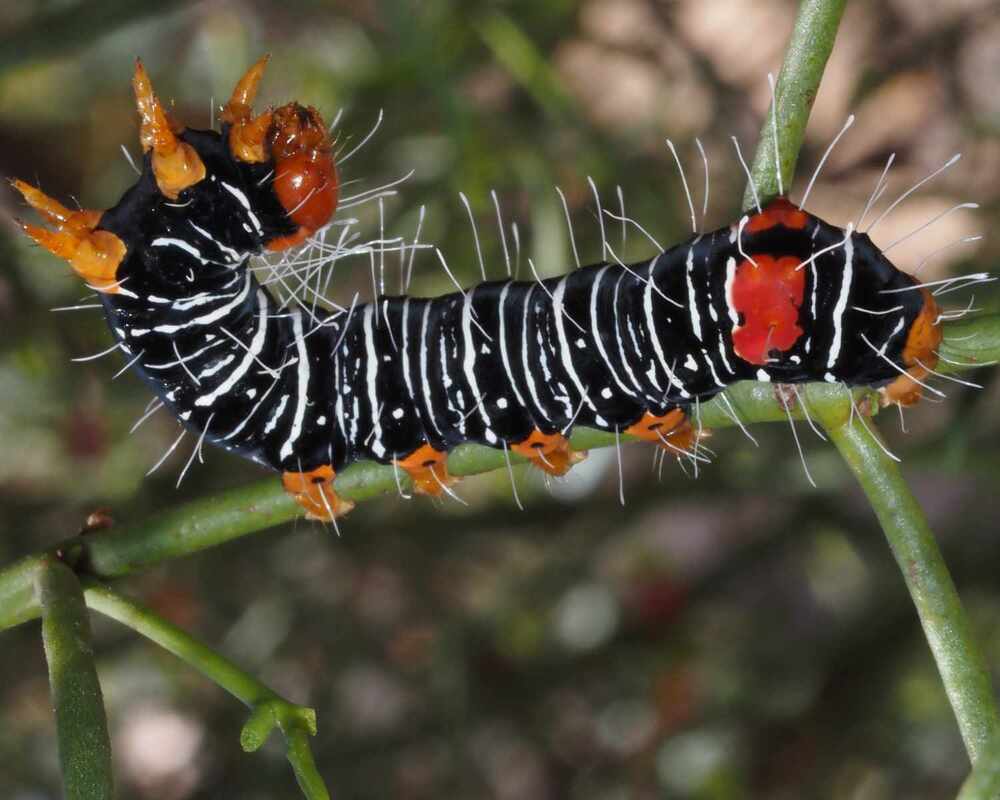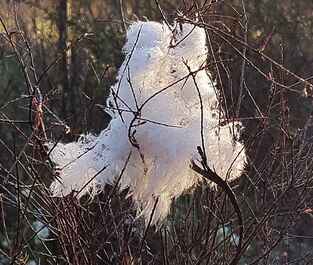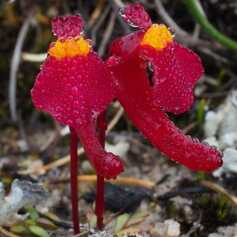
I discovered these tiny ornamental plants last August in a wet mossy patch surrounding a rock pool on a granite outcrop at Highbury B Block. It is a bladderwort, a carnivorous plant. There are 15 bladderwort species in WA, mainly in wetter areas.
The plants are only about 3 cm high but brilliantly coloured.
I thought that the curved flower receptacle was the bladder, but no, it has another function.
Apparently, it is designed for pollination by the Western Spinebill.
Red attracts birds, its height is right for ground-hunting spinebills, and the curve matches the spinebill’s beak. As the spinebill inserts its beak the beak pushes on to a hinged ovary and pistil and collects a dob of pollen to take to the next plant as it withdraws.
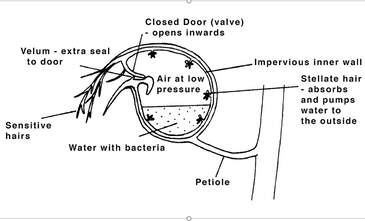 Diagram of a longitudinal section through a Utricularia bladder. The trap is a hollow utricle, mostly two cells thick, partly filled with water, and under negative pressure. Traps are usually 1–4 mm long.
Diagram of a longitudinal section through a Utricularia bladder. The trap is a hollow utricle, mostly two cells thick, partly filled with water, and under negative pressure. Traps are usually 1–4 mm long. Each trap is partially water- filled, and has a door surrounded by sensitive hairs that direct prey to the opening. The trapdoor opens inwards upon irritation by a passing animal such as a mosquito larva. After the prey brushes against the trigger hairs, it is sucked in because of the release of negative pressure maintained inside the utricle, engorging several times its resting volume. Traps are connected to the plant via stolons, stalks or leaves. Plants may even be rootless.
After firing, the trap restores the negative pressure by removing water from the lumen until the original compressed shape is returned. After this process is completed, which lasts about 30 minutes, the trap is ready to fire again.
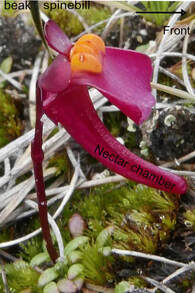 Side view with simulated spinebill beak
Side view with simulated spinebill beak The flower has three parts:
- A curved nectar chamber with hinged anthers at the top.
- A rear tepal that covers the top of nectar chamber, which has a hole in the centre and an upraised tip.
- A front tepal that looks like an insect landing pad with yellow bulges that resemble anthers.
The top view of the dissected flower shows an entry hole for a spinebill beak with a collar that would exclude all but the smallest insect. Side views show the (very dead) ovary on top of a hinged anther. The normally yellow anthers are on the underside.
In summer the plant dies back to a tiny over summering corm.
